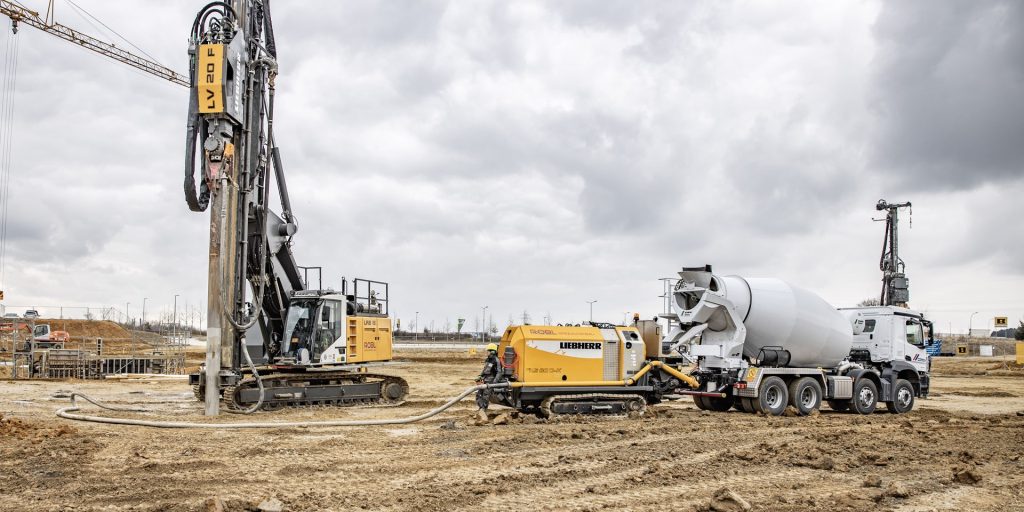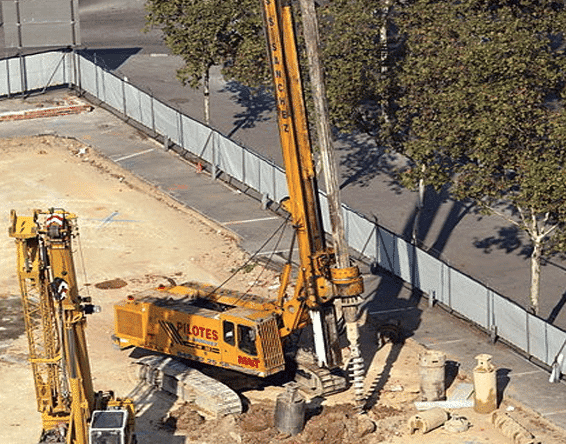A piling rig is a drill mounted on a track used in different industries and for purposes. This type of rig is used to drive piles into the soil to provide and establish strong foundation support for various projects such as expressways, bridges, industrial and civil buildings, and other structures.
This type of rig is similar in function to drilling rigs. This equipment can also be equipped with a short screw, rotary bucket, core drill, and other options.
What is a Piling Process?
Piling is a process wherein a massive weight is placed between guides permitting it to move up and down in one or single line. And then, the weight was raised using a diesel or hydraulics machine to the maximum height. Upon reaching the ideal height, the weight is released, hammering the pile and driving it deep into the ground.

Types of Pile Driving Equipment
The piling process involves several machines and equipment to drive piles during construction. This pile-driving equipment includes the following:
• Piling rigs
• Piling winches
• Hanging leader
• Hammer guides
• Piling hammer
• Helmet, driving cap, dolly, and packing
Modern Piling Rigs
Today, drill rig companies offer the best value and high-performance piling rigs that can efficiently perform in different geology or site conditions. These modern piling rigs are engineered to operate the piling driving process even in difficult terrain.
New generation pilings rigs like the continuous flight auger (CFA) piling are high-performance machines that boost productivity with innovative designs which are lighter and more stable.
These modern piling rigs are also equipped with top-of-the-line monitoring equipment to guarantee the quality of pile construction.
Continuous Flight Auger (CFA) Piling
CFA piling, also known as continuous flight auger piling, is a modern technique used in various structures to create a concrete and deep foundation.
This type of piling using CFA piles is ideal for most construction projects because it can provide both load-bearing capability and excavation support. This method is suitable for projects that are sensitive to noise & vibration as well as environmentally sensitive sites as it causes very minimum disturbance.
The strengths and advantages of CFA piling include:
• Cost-efficient foundation solution
• Fitting for all soil types and conditions
• Low noise level and no vibration
• Ideal for retaining walls
• Minimal disturbance
• Speedy installation
Why Choose a Top-Rated Manufacturer of a Piling Rig?
Pilings rigs are a hefty investment. This is why it’s crucial to purchase the best value equipment from professional and top-rated manufacturers devoted to the development and improvement of their products. Choosing a professional and reputable drill rig manufacturer gives you an assurance of getting quality drilling machines suitable for the job and first-class customer service.
Summary
The pile-driving process is a crucial part of building strong foundations. It is a complex process that needs extensive testing and accurate calculation. And to ensure the integrity and safety of this process, choose only high-quality pile material and piling equipment from a reputable dealer.
Lastly, every driller should adhere to construction risk management and always consider the key components of a safe piling rig operational plan to prevent loss of life and property damages due to inadequate planning and preparation.


